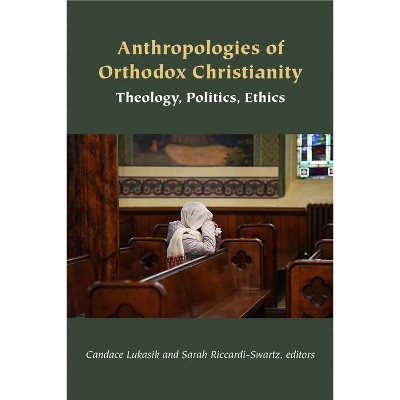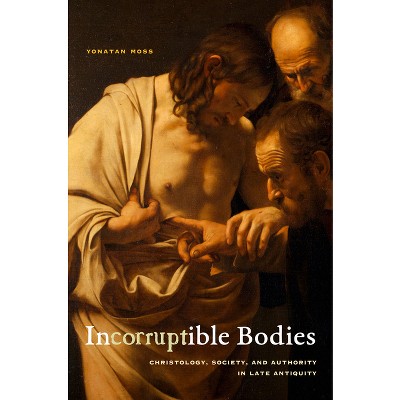Sponsored

Nature of Christianity in Northern Tanzania - by Robert B Munson (Hardcover)
$162.00
In Stock
Eligible for registries and wish lists
Sponsored
About this item
Highlights
- The Nature of Christianity in Northern Tanzania explores the relationship between the environment and social change on Mt Kilimanjaro and Mt Meru during the German colonial period (1890-1916).
- About the Author: Robert B. Munson completed his PhD in 2005 and has taught several years at Air University in Montgomery, Alabama.
- 424 Pages
- Social Science, Regional Studies
Description
About the Book
The Nature of Christianity in Northern Tanzania explores the relationship between the environment and social change on Mt Kilimanjaro and Mt Meru during the German colonial period (1890-1916). The work analyzes the synergy between landscape change, exotic plant introduction, a...Book Synopsis
The Nature of Christianity in Northern Tanzania explores the relationship between the environment and social change on Mt Kilimanjaro and Mt Meru during the German colonial period (1890-1916). The work analyzes the synergy between landscape change, exotic plant introduction, and Christian missionizing, showing how these three types of transformation impacted upon each other as well as the changing African societies to create a new African/German landscape.Review Quotes
Munson's book makes an important contribution to Tanzania's history, since the interplay between spatial transformation and the development of Christianity has not received adequate attention from historians of Tanzania.... The book also makes important contributions to cultural heritage studies by uncovering the extent to which many of the physical structures seen today in the landscape such as organization of places, varieties of plants, and religious influences have deeper roots in the German colonial past. The book, therefore, provides fresh insights into the historic ties between Tanzania and Germany that started in the late-nineteenth century. Furthermore, the value of the book lies in its interdisciplinary dimension. It brings together history, human ecology, religion, geography, and cultural heritage in the examination of environmental and social changes in northern Tanzania.... [The book's] critical engagement with German archival sources, clear writing style, and discussion of the agency of German missionaries and Africans in shaping space, botanical imperialism, and Christianity make this book an invaluable contribution to the histories of Christianity, cultural heritage, environment, cartography, and culture.
Munson's work on the ecological history of the Kilimanjaro region is unique, since it brings together his skills in German, kiSwahili, and historical geography. His field work in the region allows him to reconstruct both the physical landscape and the role of mission ideology that helped shape it. This is a work of substantial erudition that contributes a great deal to our understanding of African environmental history.
Robert Munson makes skillful use of German archival sources to present a detailed and well-researched examination of the impact of German colonial missions on the landscape of the Kilimanjaro-Meru regions. The rich, fact filled text and numerous illustrations paint an interesting and thoughtful picture of the German missionaries' perceptions of the East African landscape and their efforts to reshape that landscape. This is an important contribution to scholarship in the fields of the environmental, religious, and colonial history of East Africa.
The Nature of Christianity in Northern Tanzania is very appealing in the way it illustrates the relationship between people, places, and plants while keeping people at the center of the story. . . .The book is well written and deals with materials in an engaging way, creating many points of reflection as one progresses through the chapters. . . .The author's ability to tell this story while focusing on the environment is a major appeal of the book.
This work is a detailed chronicle of environmental and social changes that accompanied the introduction of Christianity and establishment of German colonial rule on the slopes of Mount Kilimanjaro and Mount Meru. Considering how important congregations and cash crops each became in northern Tanzania, contributing to the success of a national Lutheran church that now counts more than six million members, Munson's book provides a valuable exploration of their intertwined historical roots.... This is a meticulously researched and accessibly written examination of a relatively understudied dimension of how northern Tanzania became a thriving center of Lutheranism. It would be a valuable addition to college and seminary libraries.
About the Author
Robert B. Munson completed his PhD in 2005 and has taught several years at Air University in Montgomery, Alabama. He is currently back on active duty in the US Air Force.Dimensions (Overall): 9.1 Inches (H) x 6.1 Inches (W) x 1.4 Inches (D)
Weight: 1.65 Pounds
Suggested Age: 22 Years and Up
Number of Pages: 424
Genre: Social Science
Sub-Genre: Regional Studies
Publisher: Lexington Books
Format: Hardcover
Author: Robert B Munson
Language: English
Street Date: October 29, 2013
TCIN: 1004175686
UPC: 9780739177808
Item Number (DPCI): 247-28-6284
Origin: Made in the USA or Imported
If the item details aren’t accurate or complete, we want to know about it.
Shipping details
Estimated ship dimensions: 1.4 inches length x 6.1 inches width x 9.1 inches height
Estimated ship weight: 1.65 pounds
We regret that this item cannot be shipped to PO Boxes.
This item cannot be shipped to the following locations: American Samoa (see also separate entry under AS), Guam (see also separate entry under GU), Northern Mariana Islands, Puerto Rico (see also separate entry under PR), United States Minor Outlying Islands, Virgin Islands, U.S., APO/FPO
Return details
This item can be returned to any Target store or Target.com.
This item must be returned within 90 days of the date it was purchased in store, shipped, delivered by a Shipt shopper, or made ready for pickup.
See the return policy for complete information.
Frequently bought together

$10.19 - $23.09
MSRP $15.99 - $32.99
4.6 out of 5 stars with 78 ratings

Trending Non-Fiction

$19.31
was $20.98 New lower price
4 out of 5 stars with 65 ratings

$18.28
was $19.58 New lower price
4.7 out of 5 stars with 17 ratings

$4.59
MSRP $7.99
Buy 2, get 1 free select books
4.8 out of 5 stars with 123 ratings

$6.20
MSRP $10.95
Buy 2, get 1 free select books
4.8 out of 5 stars with 33 ratings

$7.09
MSRP $9.99
Buy 2, get 1 free select books
4.9 out of 5 stars with 46 ratings









